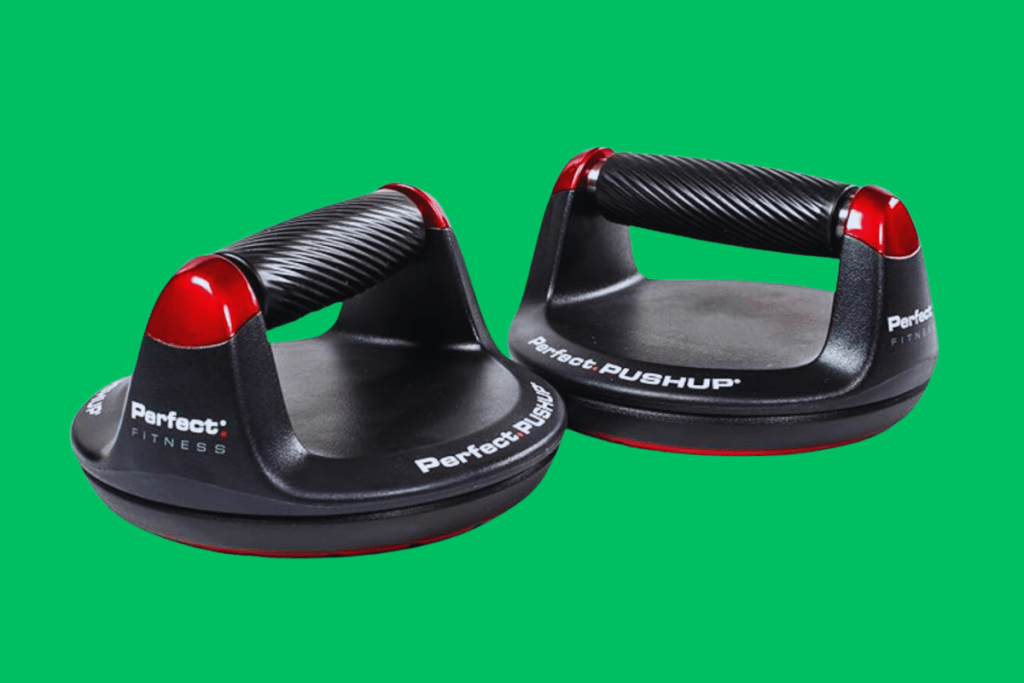While doing 100 push ups a day can have an effect, this is not a strategy that works for everyone. Here’s a summary of the benefits of push ups and drawbacks to think about, along with advice on how to maximize them:
Benefits of push ups:
- Strength and Muscle Building: Pushups are a compound exercise. They can work many muscle groups at once. Doing 100 push ups a day can strengthen your chest, shoulders, triceps, and core.
- Increased Endurance: The repetitive nature of pushups can improve your muscular endurance. It allows you to perform more reps over time.
- Convenience: Pushups need no equipment. It can be done anywhere, making it a very accessible exercise.
- Strengthens upper body muscles: Pushups are a compound exercise. They work for many inclined muscle groups in your upper body. Such as your chest, shoulders, triceps, and core push up muscles worked.

- Improves core stability: A strong core is essential for good posture and balance. Pushups engage your core muscles throughout the movement. They help to improve your core stability.
- Increases bone density: Pushups are a weight-bearing exercise. This means they help to strengthen your bones. This can help to reduce your risk of osteoporosis later in life.
- Boosts metabolism: Building muscle can help to increase your metabolism. It means you’ll burn more calories at rest.
- Convenient and requires no equipment: Pushups can be done anywhere, anytime. And we can do pushups without any equipment. This makes them a great exercise for people who are busy or who don’t have access to a gym.
Downsides:
- Risk of Injury: Doing too many pushups with improper form can lead to overuse injuries. You will feel stress in your wrists, elbows, and shoulders.
- Limited Progression: For the people who are enough advanced, 100 push ups a day is not enough to keep challenging their muscles and lead to plateaus.
- Muscle Imbalance: Pushups primarily target the pushing muscles of your upper body. You’ll need to incorporate pulling exercises to avoid muscle imbalances.
Risks
- Overuse injuries: Doing pushups every day can increase your risk of overuse injuries. Such as tendinitis and bursitis. This is especially true if you don’t use the proper form.
- Plateaus: If you do the same number of pushups every day, your muscles will eventually adapt. Then you won’t see any further progress. To keep challenging your muscles, you’ll need to increase the difficulty of your pushups.
- May not be suitable for everyone: Pushups can be difficult for beginners. It is also hard for people with certain injuries. If you’re new to exercise, it’s best to start with a lower number of pushups. Then gradually increase the difficulty as you get stronger.
Making the Habit of 100 push ups a day:
- Listen to Your Body: Start with a lower number of pushups. Day by day, increase reps as you get stronger. Take rest days to allow for muscle recovery.
- Focus on Form: Proper form is crucial to prevent injuries. Keep your back straight, core engaged, and glutes squeezed. Then keep your wrists stacked under your shoulders.
- Change for Beginners: If 100 push ups a day are too much, consider doing pushups on your knees. Or incline pushups against a wall or bench.
- Incorporate Variation: Many pushup variations target different muscle groups. Experiment with inclined/decline pushups, diamond push ups benefits, and wide pushups.
- Warm-up and Cool-down: Always warm up your muscles before starting. Cool down with stretches afterward to prevent soreness.
Alternatives Ways:
If 100 push ups a day don’t seem like a good fit for you, there are plenty of other exercises to consider:
- Dumbbell Bench Press: Targets similar muscles as pushups but allows for progressive overload.
- Chest Flyes: Isolates the chest muscles for targeted definition.
- Dips: Works your triceps and chest, requiring parallel bars or a sturdy chair.
- Plank: Excellent core exercise that also strengthens your shoulders.
Here’s some more information on getting the most out of your pushup routine:
Pushup Progressions:

If you find 100 push ups a day too easy, there are ways to make them more challenging and keep progressing:
- Increase Difficulty: Move from incline pushups to standard pushups. Then decline pushups (feet elevated).
- Weighted Pushups: Add a weight vest or backpack filled with books for an extra 100 push up challenge.
- Explosive Pushups: Try clapping your hands mid-pushup for an explosive variation (advanced).
- Slow Pushups: Perform pushups in slow and controlled motion. Such as you can push 3-4 seconds down, and 3-4 seconds up for a long time under tension.
Advanced Variations:
- Archer Pushups: Perform a pushup with one hand reaching forward at a time. It is very important to be highly engaged for stability.
- Diamond Pushups: Hands close together in a diamond shape. Then target your triceps more intensely.
- Single-Leg Pushups: Perform a pushup with one leg lifted off the ground. Do it by challenging your core and balance.
- Handstand Pushups: Advanced push ups build muscle requiring significant upper body and core strength. It can be practiced against a wall for beginners.
More Tips:
- Track Your Progress: Keep a log of your pushup reps and variations to check for improvement. And stay motivated all the time.
- Focus on Quality over Quantity: Focus on proper form over speed or completing a high number of reps with bad form.
- Warm-up and Cool-down: Follow a 5-10 minute dynamic warm-up (jumping jacks, arm circles). Then do static stretches (best chest push up stretch, tricep stretch).
- Nutrition: For muscle building, ensure you’re consuming enough protein and calories. They are very important to support your workouts.
Remember, consistency is key. Aim for regular pushup workouts, even if it’s not 100 reps every single day. Listen to your body, focus on proper form, and gradually increase the difficulty as you get stronger. There are many resources available online to help you find the proper pushup form.
Top Tips
- Use proper form: This is essential to prevent injuries. Make sure your back is straight, your core is engaged, and your hands are shoulder-width apart.
- Start slow and gradually increase the number of pushups you do. If you’re a beginner, start with just a few pushups and gradually increase the number as you get stronger.
- Take rest days. Your muscles need time to recover from exercise. Aim to take at least one rest day per week.
- Change the exercise if necessary. There are many different variations of pushups, so you can find one that is challenging but still doable for you. For example, you can try knee pushups, incline pushups, or decline pushups.
- Listen to your body. If you experience any pain, stop doing pushups and rest until the pain goes away.
Consult a healthcare professional before starting any new exercise program. Especially if you have any pre-existing injuries.
Who Might Benefit:
- Intermediate exercisers: If you already have a decent push-up base target for 100. Take proper rest and start with a variation. Around 40-50 reps are suggested for good form. It could be a way to challenge yourself and see further gains.
- Those seeking a simple routine: For some, the simplicity of daily push-ups can be appealing, especially if time is limited.
Who Might Want to Reconsider:
- Beginners: Daily push-ups can be demotivating and lead to injuries for those new to exercise. Start with fewer reps, focus on form, and gradually increase.
- Advanced exercisers: You’ll likely plateau quickly with daily sets. Explore more advanced push-up variations or weight training for upper body development.
- Those with injuries: Pre-existing wrist, elbow, or shoulder issues can be aggravated by daily push-ups.
Potential Benefits Beyond Strength:
- Improved Bone Density: Push-ups can help strengthen bones in the arms, shoulders, and chest. They reduce the risk of osteoporosis.
- Metabolic Boost: The exertion from push-ups can elevate your heart rate and increase calorie burn. They help in weight management.
- Enhanced Core Stability: Engaging your core during push-ups strengthens the muscles. It supports your spine and improves posture.
- Mental Toughness: Completing a daily push-up challenge can build mental resilience and discipline.
Strategies to Mitigate Risks:
- Progressive Overload: Don’t jump straight to 100. Gradually increase reps or sets over weeks to allow your body to adapt and prevent injuries.
- Focus on Technique Variations: Do incline, decline, diamond, or wide-grip push-ups to target different muscle groups. Reduce stress in specific areas.
- Active Recovery: Include activities like yoga or light cardio on rest days to promote blood flow and aid muscle recovery.
- Focus on Sleep and Nutrition: Adequate sleep allows your body to repair and rebuild muscle tissue. A balanced diet fuels your workouts and recovery.
- Consider Help Techniques: If you struggle with full push-ups, knee push-ups can help to build strength. Or you can use resistance bands before progressing.
Alternatives to Daily Push-Ups:
- Push-Up Pyramids: Perform sets with increasing and decreasing reps (e.g., 10 reps, 9 reps, 8 reps, etc., then back up).
- Push-Up Challenges with Rest Days: Spread the 100 push-ups across several sets throughout the week with rest days in between.
- Circuit Training: Combine push-ups with other bodyweight exercises. Such as squats, lunges, and planks for a more well-rounded workout.
Advanced Considerations for 100 Push Ups a Day:
Here’s some information for the advanced approach of 100 daily push-ups:
Advanced Variations:
- Weighted Push-Ups: Adding a weight vest or backpack increases difficulty and challenges your upper body strength.
- Plyometric Push-Ups: Explode off the ground with a clap at the top of the push-up for an added power element (be cautious and ensure proper form).
- Archer Push-Ups: Perform push-ups with one hand reaching forward at a time. Targeting core stability and shoulder strength.
- Handstand Push-Ups: An advanced exercise requiring significant upper body and core strength. Only attempt with proper training and a safe environment.
Monitoring Progress:
- Track Reps and Sets: Check how many sets and reps you can comfortably perform with good form. This helps identify plateaus and adjust your routine.
- Time Trials: Time yourself performing sets of push-ups to track improvements in muscular endurance.
- Video Analysis: Record yourself doing push-ups and review the footage to identify and correct any form issues.
Advanced Recovery Techniques:
- Foam Rolling: Use a foam roller to target muscle tightness and improve blood flow in your chest, shoulders, and triceps.
- Static Stretching: Hold static stretches for major muscle groups involved in push-ups. It will improve your flexibility and range of motion.
- Self-Myofascial Release: Techniques like using massage balls can help release tight trigger points. And they also improve muscle recovery.
Important Considerations:
- Listen to Your Body: Pain is a sign to stop or change. Don’t push through pain, as it could lead to serious injuries.
- Overtraining Risk: Daily high-volume push-ups can lead to overtraining. Check for signs like fatigue, decreased performance, or increased injury risk.
- Importance of Rest and Recovery: Focus on adequate sleep and rest days to allow your body to recover and rebuild muscle tissue.
- Remember: The 100 push ups in 100 days challenge is demanding and requires a strong foundation of fitness and proper execution. It might not be suitable for everyone. For best benefits and injury avoidance, combine push-ups with other exercises.
Here are some more areas you might find interesting:
The Science Behind Push-Ups:

- Muscle Activation: Research shows push-ups primarily activate the pectorals (chest), triceps (back of the arm), and anterior deltoids (front shoulder). Additionally, the core and lower back push ups muscles engage for stability.
- Neuromuscular Adaptations: As you train with push-ups, your nervous system becomes more efficient at recruiting push ups for muscle fibers. They lead to increased strength and coordination.
- Metabolic Response: The exertion from push-ups elevates your heart rate and metabolic rate. They contribute to calorie burning and potentially help weight management.
Historical and Cultural Significance of Push-Ups:
- Military Fitness: Push-ups have been a staple in military fitness programs for decades. Because they need minimal equipment and effectively build upper body strength and endurance.
- Global Fitness Challenges: Push-up challenges have gained popularity worldwide. They are promoting exercise and a sense of community among participants.
- Symbol of Strength and Discipline: Pushups are often seen as a symbol of physical strength and mental discipline. So, now it has become a popular exercise choice.
The Push-Up Community:
- Online Resources: Many online communities, forums, and social media groups prefer push-ups. Because they offer support and motivation.
- Push-Up Competitions: Competitive push-up events test participants’ upper body strength and endurance. They are pushing the boundaries of human performance.
- Fitness Influencers: Many fitness influencers and trainers incorporate push-ups into their routines and share variations and workout plans online.
The Future of Push-Ups:
- Technological Integration: Wearable technology and fitness apps could track push-up performance. They are offering personalized feedback and guidance.
- Virtual Reality Workouts: VR experiences might create immersive push-up training environments with gamified elements. They do it for increased engagement.
- Focus on Form and Technique: A growing emphasis on proper form and technique to maximize 100 push ups a day results and prevent injuries is likely to continue.
Remember: There’s no one-size-fits-all approach. The best plan considers your fitness level, goals, and any limitations. Consulting a certified trainer can help design a program tailored to your needs.
Doing 100 push ups a day can be a great way to build upper body strength and endurance. But it’s important to focus on proper form, listen to your body, and incorporate rest days. For a well-rounded workout routine, consider variations in exercises. Practice those that target different muscle groups.











43 Comments
order amoxicillin pill – comba moxi buy generic amoxil
cheap amoxil pill – https://combamoxi.com/ buy amoxicillin tablets
buy generic diflucan for sale – site fluconazole 200mg ca
cost fluconazole 100mg – https://gpdifluca.com/ buy fluconazole 200mg
escitalopram 20mg generic – https://escitapro.com/# how to buy escitalopram
cenforce 50mg cheap – site cenforce 100mg price
buy cenforce 50mg sale – buy cenforce tablets order cenforce 100mg pills
how to buy tadalafil – on this site cialis 20 mg price walgreens
vardenafil and tadalafil – https://ciltadgn.com/ cialis w/dapoxetine
cialis indications – https://strongtadafl.com/# cialis at canadian pharmacy
tadalafil generico farmacias del ahorro – can you purchase tadalafil in the us how long for cialis to take effect
ranitidine 300mg uk – aranitidine ranitidine 300mg generic
order ranitidine generic – zantac 300mg price buy ranitidine pill
50mg viagra cost – https://strongvpls.com/# viagra buy online generic
buy generic viagra new zealand – https://strongvpls.com/# viagra tablets sale
This website really has all of the information and facts I needed adjacent to this participant and didn’t comprehend who to ask. order amoxil pills
Thanks recompense sharing. It’s outstrip quality. generic nolvadex
This is a theme which is virtually to my heart… Diverse thanks! Exactly where can I lay one’s hands on the phone details an eye to questions? cenforce 100 comprar seguro
I couldn’t resist commenting. Profoundly written! prednisone pills
This website positively has all of the low-down and facts I needed there this case and didn’t positive who to ask. https://ursxdol.com/sildenafil-50-mg-in/
I couldn’t weather commenting. Well written! https://prohnrg.com/product/cytotec-online/
Greetings! Utter serviceable advice within this article! It’s the crumb changes which choice espy the largest changes. Thanks a lot for sharing! https://ursxdol.com/azithromycin-pill-online/
I am in point of fact thrilled to glance at this blog posts which consists of tons of of use facts, thanks object of providing such data. https://prohnrg.com/product/loratadine-10-mg-tablets/
This is the kind of topic I take advantage of reading. https://aranitidine.com/fr/modalert-en-france/
I am actually happy to glitter at this blog posts which consists of tons of useful facts, thanks towards providing such data. cialis super active livraison rapide belgique
The thoroughness in this piece is noteworthy. https://ondactone.com/spironolactone/
The thoroughness in this section is noteworthy. https://ondactone.com/product/domperidone/
The thoroughness in this piece is noteworthy.
https://doxycyclinege.com/pro/sumatriptan/
Thanks on putting this up. It’s understandably done. motilium 10 mg price in india
The reconditeness in this piece is exceptional. http://www.predictive-datascience.com/forum/member.php?action=profile&uid=44795
This is the make of enter I find helpful. http://zqykj.com/bbs/home.php?mod=space&uid=302505
buy dapagliflozin generic – generic forxiga 10 mg dapagliflozin without prescription
buy forxiga 10 mg online – https://janozin.com/# dapagliflozin 10mg us
orlistat canada – xenical without prescription purchase orlistat for sale
xenical price – https://asacostat.com/ order xenical 60mg generic
This is the big-hearted of literature I positively appreciate. http://www.underworldralinwood.ca/forums/member.php?action=profile&uid=493569
Thanks on putting this up. It’s okay done. http://www.haxorware.com/forums/member.php?action=profile&uid=396554
You can shelter yourself and your family by being wary when buying pharmaceutical online. Some druggist’s websites function legally and offer convenience, privacy, rate savings and safeguards as a replacement for purchasing medicines. buy in TerbinaPharmacy https://terbinafines.com/product/doxazosin.html doxazosin
You can shelter yourself and your stock by way of being alert when buying medicine online. Some pharmaceutics websites operate legally and sell convenience, privacy, bring in savings and safeguards over the extent of purchasing medicines. buy in TerbinaPharmacy https://terbinafines.com/product/valtrex.html valtrex
This is the kind of literature I in fact appreciate. TerbinaPharmacy
This is a question which is virtually to my heart… Myriad thanks! Quite where can I find the contact details in the course of questions? TerbinaPharmacy
I’ll certainly bring back to review more.
More articles like this would frame the blogosphere richer.